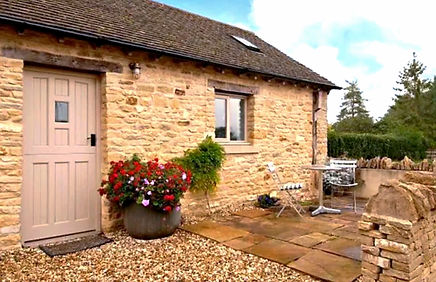

Designing for the Future: Lasting Buildings, Lasting Value
At Grayling Thomas Architects, we believe great architecture serves both people and planet. Our approach combines sustainable design principles with meaningful social value creation, recognising that the most successful buildings enhance community wellbeing while minimising environmental impact.
Based in Oxfordshire and working across the UK, we design buildings that last- reducing long-term energy costs while creating spaces that genuinely support how people live, learn, and connect. Whether it's a school that sparks creativity or homes that strengthen communities, our sustainable architecture focuses on lasting positive impact. Creating social value is embedded in the practice's ethos and this applies to the way we design buildings, the way we run our practice and form lasting connections with our communities and construction industry partners.

The social value created by Grayling Thomas Architects has been recognised through Industry Awards including:
-
Social Impact Awards 2020 - Winner– Royal Institute of Chartered Surveyors
-
Project of the Year 2020 – Winner –Royal Institute of Chartered Surveyors-
-
Shortlisted RIBA East Design Awards 2022
-
Build Architecture Awards 2021 – Best Architectural Education Practice Oxfordshire
-
ProCon Leicestershire Best non-residential project 2019 - Winner
-
Thames Valley Property Awards 2020 – Finalist

What Is Sustainable Architecture?
Sustainable architecture goes beyond energy efficiency to encompass buildings designed for longevity, community integration, and genuine social benefit. It means creating structures that reduce environmental impact while actively supporting human wellbeing and community connection.
Our definition centres on three key principles: energy-efficient buildings that maintain low operational costs over decades, regional materials that help developments integrate naturally into existing communities, and design approaches that work with both natural systems and human needs. We regularly align with BREEAM frameworks and incorporate Passivhaus principles to ensure measurable performance standards.
True sustainable design considers how buildings influence daily life. In sustainable education design, this means spaces that support diverse learning styles and foster creativity. For sustainable residential design, it encompasses homes that enhance life satisfaction while building stronger neighbourhoods.

Our Approach: Where Sustainability Meets Social Value
Energy Efficiency as Social Responsibility
Sustainable design fundamentally serves social purposes by reducing long-term costs for building occupants. Energy-efficient buildings with superior insulation, strategic orientation, and natural ventilation strategies deliver immediate financial benefits while creating healthier, more comfortable environments for users. Our material choices support both environmental and social objectives. Regional, low-carbon materials reduce environmental impact while helping new buildings complement their surroundings, enabling developments to enhance rather than disrupt existing communities.
Design for Human Wellbeing
Every design decision considers how spaces influence occupant wellbeing. We are committed to designing spaces that engage people's creativity and learning, making a positive impact every day. In school design for example, pitched roofs and other efforts to increase the height of spaces create psychological benefits through increased spatial volume, while extensive natural light and integrating biophilic elements support both learning outcomes and environmental performance. Wide corridors and intuitive wayfinding serve accessibility needs while enabling natural ventilation strategies.
Our Hertfordshire residential scheme demonstrates how sustainable features like cascading green roof terraces and dual-aspect apartments simultaneously support biodiversity, manage stormwater, and enhance quality of life for residents through access to nature and superior natural light.


Community Engagement and Sustainability
At Grayling Thomas Architects, we place community engagement at the centre of the design process and we are currently engaged in community projects which include a mixed use community theatre / charity space, a community youth hub / sports centre and shared community halls and meeting rooms within school projects.
We are committed to responding to the climate emergency and design thermally efficient buildings which minimise energy usage and carbon. We are engaged in the design of our first net zero carbon school which is being designed to passive house standards. GTA are actively engaged in reducing our own carbon footprint and have joined the "Reducing the carbon monster" programme at Oxford Brookes University which is monitored on an ongoing basis. We are working towards net zero by 2030 and this process continues in our school and community projects for our clients.
We enjoy working with our local communities and this includes local schools such as recent talk and workshop design day with St Gregory The Great Academy in Oxford.
Social Value Through Sustainable Communities
Social value in architecture emerges when buildings actively support community connection and individual potential. Community engagement drives our design process- involving residents, pupils, and teachers ensures that sustainability measures align with genuine user needs rather than abstract environmental targets.
Examples of social value creation include sensory teaching tools that support diverse learning styles, community spaces that encourage neighbourhood interaction, and modular construction approaches that reduce site disruption while enabling future adaptability. These features demonstrate how sustainable architecture can deliver measurable social benefits alongside environmental performance.
Our projects show that the most effective social value outcomes often emerge from sustainable design strategies. Natural ventilation improves both energy performance and indoor air quality. Green infrastructure provides both environmental benefits and valuable community amenities. Durable, locally-sourced materials reduce lifecycle costs while supporting regional economic development.



Regional Commitment: Sustainable Design Across the UK
As architects rooted in Oxford and Oxfordshire, we understand how local context influences both sustainability strategies and social value creation. Regional material knowledge, established supply chains, and understanding of community character enable us to deliver projects that serve both environmental objectives and local needs effectively.
Working across England has shown us that successful sustainable architecture must respond to specific community contexts while meeting national performance standards. Local planning priorities, climate conditions, and community needs all influence how we balance sustainability measures with social value creation in each project.

Building with Purpose
Sustainable architecture and social value creation are inherently connected- buildings that serve communities well while minimising environmental impact represent architecture at its most purposeful. Our projects demonstrate that environmental responsibility and community benefit strengthen rather than compete with each other.
Giving focus to social value is right and responsible and often a legal requirement for funding applications, which we have experience with. Whether you're developing educational facilities that must support diverse learning needs or residential schemes that will shape neighbourhood character, we invite you to explore how integrated sustainable design can enhance your project's impact. Contact Grayling Thomas Architects to discuss sustainable architecture solutions tailored to your community's specific needs and aspirations.
Get in Touch
If you have any questions, please don't hesitate to get in touch. You can contact us directly by email or use our convenient enquiry form.
Oxfordshire
7 Goddards Lane
The Theatre Chipping Norton
Chipping Norton
OX7 5NP
Cambridgeshire
Sheraton House
Castle Park
Cambridge
CB3 OAX




